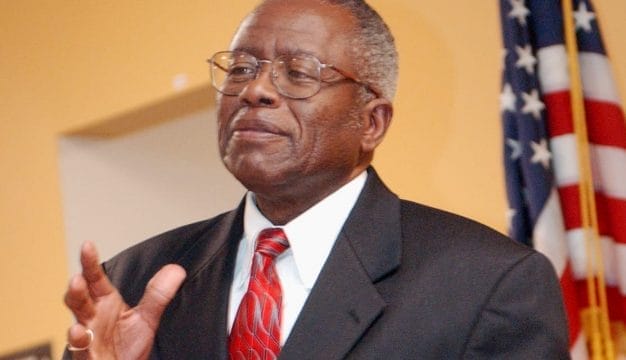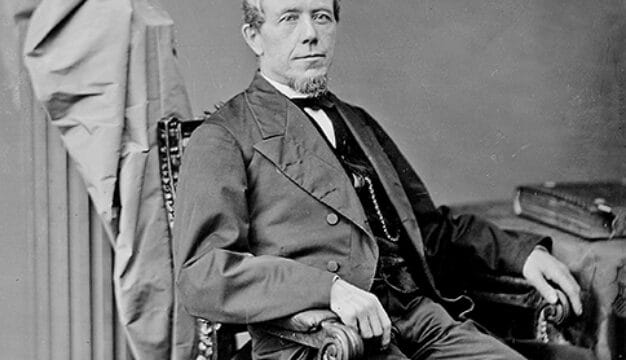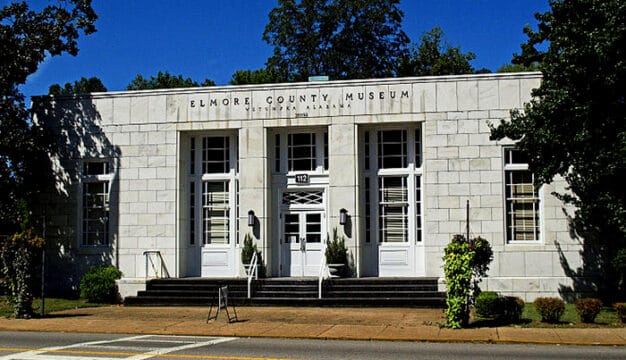Morrison's Cafeterias
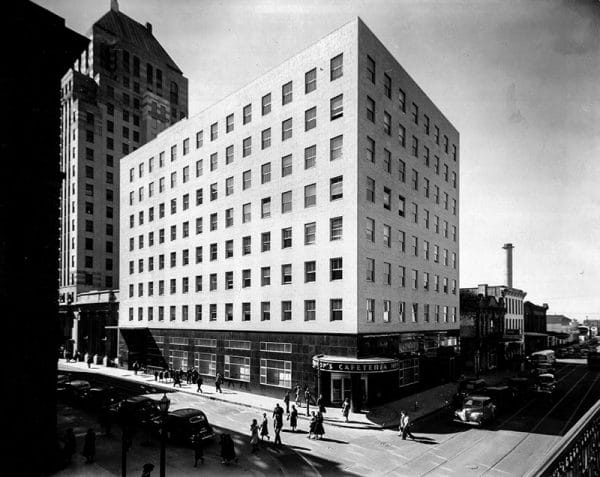 Morrison’s Cafeteria, 1945
The first Morrison’s was opened by J. A. Morrison in Mobile on September 4, 1920. Morrison helped develop the cafeteria dining concept, which was unique at the time and would later become synonymous with the southern United States. Initially, Morrison worked to convince both his customers and his employees that the concept was a good one, and the public soon accepted the idea of self-serve home-style cooked food offered at a modest cost. At its peak, the company expanded to more than 150 restaurants that offered meals 365 days a year with more than 100 food items prepared “homemade” daily.
Morrison’s Cafeteria, 1945
The first Morrison’s was opened by J. A. Morrison in Mobile on September 4, 1920. Morrison helped develop the cafeteria dining concept, which was unique at the time and would later become synonymous with the southern United States. Initially, Morrison worked to convince both his customers and his employees that the concept was a good one, and the public soon accepted the idea of self-serve home-style cooked food offered at a modest cost. At its peak, the company expanded to more than 150 restaurants that offered meals 365 days a year with more than 100 food items prepared “homemade” daily.
Morrison made his only public offering of company stock in 1928. To help insure food quality and service as the number of stores increased, the company established Food Distributors in Tampa, Florida, in 1946. This wholly owned subsidiary allowed the company to save money by purchasing food supplies in bulk and also control the quality and consistency of the food offered. Shareholders eventually expanded to all 50 states and several foreign countries.
When World War II and rationing ended, the company expanded to include several more subsidiaries, including Morrison’s Merchandising Corporation, Food Service Equipment Company, Morrison’s Assurance Company, Morrison’s Chemical Company, and Gill Printing Company. This structure permitted Morrison’s to manufacture and distribute nearly every operational need from detergent and cleanser to coffee and the stainless steel equipment used in the kitchen and interior decoration and allowed the company to become one of the most efficient in the food-service and restaurant industry.
 Mobile Morrison’s Cafeterias, 1967
Morrison’s further evolved in the early 1950s. The company won a contract to cater meals for the cast and crew of the film The Greatest Show on Earth (Paramount Pictures, 1952). This experience showed company executives the value of expanding the business into food service contracting and catering units, and this expansion eventually brought in more revenue than the cafeterias themselves. With the success of its food distribution service to its own establishments, in 1952 the company entered the contract food service and management market, providing food and supplies to many other institutions and businesses. By the end of the 1950s, Morrison’s became the nation’s largest cafeteria chain and a major food-service operator. By the 1970s Morrison’s was serving more meals at hospitals, nursing homes, schools, military bases, companies, industrial plants, and private organizations than at its mainstream cafeterias. Morrison’s enterprise continued to expand across the southeastern United States, along with its own public cafeteria chain.
Mobile Morrison’s Cafeterias, 1967
Morrison’s further evolved in the early 1950s. The company won a contract to cater meals for the cast and crew of the film The Greatest Show on Earth (Paramount Pictures, 1952). This experience showed company executives the value of expanding the business into food service contracting and catering units, and this expansion eventually brought in more revenue than the cafeterias themselves. With the success of its food distribution service to its own establishments, in 1952 the company entered the contract food service and management market, providing food and supplies to many other institutions and businesses. By the end of the 1950s, Morrison’s became the nation’s largest cafeteria chain and a major food-service operator. By the 1970s Morrison’s was serving more meals at hospitals, nursing homes, schools, military bases, companies, industrial plants, and private organizations than at its mainstream cafeterias. Morrison’s enterprise continued to expand across the southeastern United States, along with its own public cafeteria chain.
As the shopping mall boom took off in postwar America, especially in the 1950s through 1970s, Morrison’s boomed with it, with its cafeterias often serving as so-called anchors. Following the trend of corporate diversifications in the late 1960s, Morrison’s branched out from the food industry into the hospitality industry. In 1968 the company acquired the Admiral Benbow Inns, an upscale motel chain located in many major southern cities. This foray proved unsuccessful, however, and Morrison’s sold the motel chain.
In the early 1980s, under the leadership of Ernest Eugene Bishop (who had worked his way up in the ranks after joining the firm at age 16 in 1947), the company began to divest itself of non-restaurant and food service interests in order to improve revenue and profits and become a more focused and efficient operation. The profits from the divestments went into areas more in line with Morrison’s food business expertise, such as the development of other restaurant concepts. In 1982, the company acquired and began to expand the Ruby Tuesday chain, which had started in Knoxville, Tennessee. Expertise gained in this area of the restaurant industry led the company to develop other specialty restaurant chain concepts, including the L & N Seafood Grill, Silver Spoon Café, Mozzarella’s Café, Sweetpea’s Restaurants, and Tia’s Tex-Mex. By the 1990s, these restaurants were actually doing better than the cafeterias.
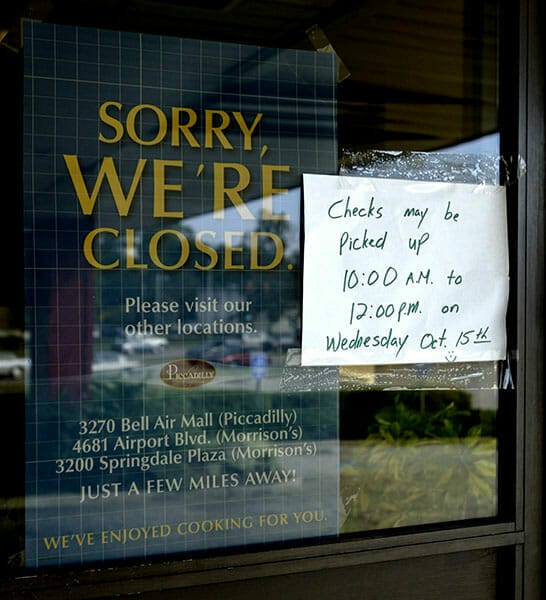 Piccadilly Cafeteria 2003
At its peak, the chain had 151 cafeterias, but by the late 1980s and early 1990s, restaurant-goers’ tastes had begun to change. Trends began to shift from old-fashioned cafeteria chains like Morrison’s to newer casual-dining restaurants like Applebee’s and Morrison’s own Ruby Tuesday brand. Cafeterias, as a dining concept, began to be viewed as an antiquated business model relying on an aging clientele. New generations of diners patronized the more fashionable casual dining establishments. Because of these factors and success with specialty dining concepts, in 1996 Morrison’s dissolved Morrison’s Restaurants and created three separate and independent companies: Ruby Tuesday, Inc., which also included the other casual dining restaurants; Morrison Health Care, which took over food service for hospitals and nursing homes; and Morrison’s Fresh Cooking, which consisted of the original cafeteria chain. The cafeterias continued to struggle in the changing restaurant environment, and Morrison’s Fresh Cooking sold its remaining 142 cafeterias for $46 million to long-time rival Piccadilly, Inc., based in Baton Rouge, Louisiana, in April 1996. At the time, Morrison’s was operating in 13 states, mostly in the southeastern United States, and employed more than 7,800 people. Today, only the Mobile restaurant remains. Morrison Health Care was rebranded during this time as Morrison Management Specialist and oversaw both senior living facilities and food service to hospital and healthcare facilities. By the end of 1999, most of the Morrison’s restaurants had been converted to Piccadilly Cafeterias and Ruby Tuesday had been sold. In 2001, Compass Group acquired Morrison Management Specialist and split it into two companies: Morrison Healthcare and Morrison Living.
Piccadilly Cafeteria 2003
At its peak, the chain had 151 cafeterias, but by the late 1980s and early 1990s, restaurant-goers’ tastes had begun to change. Trends began to shift from old-fashioned cafeteria chains like Morrison’s to newer casual-dining restaurants like Applebee’s and Morrison’s own Ruby Tuesday brand. Cafeterias, as a dining concept, began to be viewed as an antiquated business model relying on an aging clientele. New generations of diners patronized the more fashionable casual dining establishments. Because of these factors and success with specialty dining concepts, in 1996 Morrison’s dissolved Morrison’s Restaurants and created three separate and independent companies: Ruby Tuesday, Inc., which also included the other casual dining restaurants; Morrison Health Care, which took over food service for hospitals and nursing homes; and Morrison’s Fresh Cooking, which consisted of the original cafeteria chain. The cafeterias continued to struggle in the changing restaurant environment, and Morrison’s Fresh Cooking sold its remaining 142 cafeterias for $46 million to long-time rival Piccadilly, Inc., based in Baton Rouge, Louisiana, in April 1996. At the time, Morrison’s was operating in 13 states, mostly in the southeastern United States, and employed more than 7,800 people. Today, only the Mobile restaurant remains. Morrison Health Care was rebranded during this time as Morrison Management Specialist and oversaw both senior living facilities and food service to hospital and healthcare facilities. By the end of 1999, most of the Morrison’s restaurants had been converted to Piccadilly Cafeterias and Ruby Tuesday had been sold. In 2001, Compass Group acquired Morrison Management Specialist and split it into two companies: Morrison Healthcare and Morrison Living.

